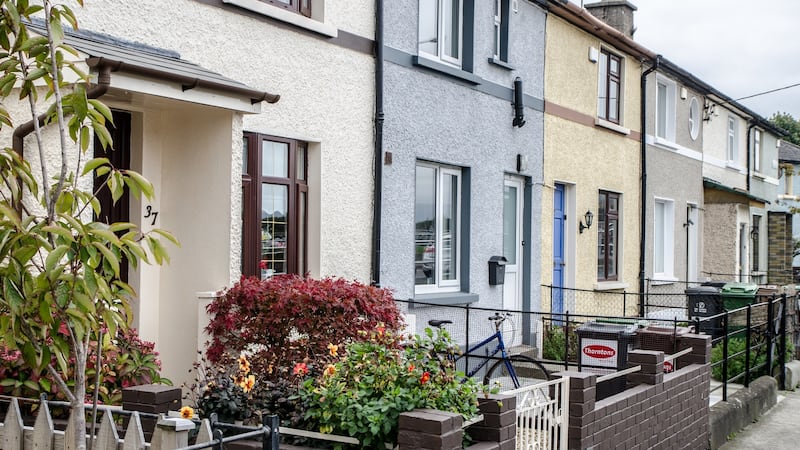Typically, round about now, many of us would be sitting in the sunshine sipping a €3 glass of wine, eating a €10 plate of tapas or moules frites and wondering how life can be so expensive back at home. Do we really have to go back?
Instead, this year, many of us will be spending our holidays at home. We'll be enjoying the scenery and many pleasures of Ireland – but likely also bemoaning the considerable expense. A summer holiday in Ireland has undoubtedly brought the cost of living here into sharp focus once more. But how does it really compare with other European countries?
Well, thanks to new figures from Eurostat for 2020, we can easily compare average costs in Ireland with those for similar items in other European Union countries. The survey covers prices in all 27 member states as well as in the UK, in three European Free Trade Area (Efta) states (Switzerland, Iceland and Norway), five countries seeking membership of the EU and one possible member candidate (Bosnia & Herzegovina).
A cursory glance at the statistics might make you think that Ireland is a Scandinavian-type economy, given the parity of prices with such commonly accepted high-cost economies as Norway and Denmark. The difference, perhaps, is that while prices might be comparable, taxes are lower in Ireland – as are public services.
Cigarettes and alcohol: +86.9 per cent
Like Oasis once sang, all you want might be cigarettes and alcohol this summer but without a cheap flight out of here, you’re going to have to pay for it.
The costs of such vices are not far off double the EU average in Ireland and are three times more expensive than the country with the lowest prices. That makes Ireland the most expensive country in the EU for alcohol and cigarettes, well ahead of the next state, Finland, where prices are 58 per cent above the EU average.
Excise duties undeniably have a role to play here, as do Government initiatives. And, given the recent introduction of more rules on the cost of alcohol, such as a ban on multi-buy deals and alcohol voucher schemes, as well as plans for minimum pricing, the differential is likely to get even bigger.
Consider a one litre bottle of Aperol, the mixer used to make the popular Aperol spritz drink. In Sainsbury’s in the UK, a bottle can be bought for £15 (€17.50). It costs €13.80 in Carrefour in France and €16.43 with Eroski in Spain, but €24 for a similar sized bottle in an Irish supermarket.

Housing: +77.7 per cent
It will come as a surprise to no one to hear that Ireland is the most expensive country in the EU for housing costs. According to the Eurostat survey, housing costs in Ireland are 77.7 per cent above the EU average, ahead of even “expensive” countries such as Luxembourg (+70.1 per cent) and Denmark (+60.7 per cent). Among the wider survey group, it is second only to Efta’s Switzerland (+93.6 per cent).
Countries where housing costs are below the EU average include Spain (-2.1 per cent); Italy (-3 per cent); Croatia (-55.5 per cent) and Bulgaria, where housing costs are the lowest of all, 62.2 per cent lower than the EU average.
According to another commission publication on market rents for 2020, the scale of the difference is clear. Typical rent on a three-bed house will cost €2,800 in Dublin, or €2,150 for a two-bed apartment.
In Berlin the comparable figures are €1,900 and €1,400, while the respective costs are €2,650 and €1,900 in Copenhagen, and €2,700 and €2,200 in Paris.
Communications: +40 per cent
Broadband, postal services and telephone; they’re all considerably more expensive in Ireland than in other parts of the EU with Ireland the fourth most expensive place for such services.
With costs 40 per cent more than the EU average, Ireland joins high-cost economy Luxembourg, as well as Belgium and Greece, towards the top of the table where Efta states Norway, Iceland and Switzerland also appear.
And these costs continue to rise. Postage, for example, got 10 per cent more expensive, thanks to the latest increase in the cost of a national stamp from €1 to €1.10.
A survey earlier this year from broadband comparison site Cable ranked Ireland as one of the more expensive European countries, with an average monthly cost of $48.55 (€40.78). That compared with $32.16 in France, $43.43 in Spain and $41.46 in Germany.

Transport: +37.1 per cent
When it comes to planes, trains and automobiles, Ireland is the fifth most expensive across Europe, with costs at 37.1 per cent more than the EU average.
And transport prices are increasing. Figures from the CSO show that in the year to May 2021, transport costs rose by 3.6 per cent.
Norway is the most expensive of the European states surveyed, at 66.3 per cent more than the EU average, followed by other “high-cost” countries such as Iceland and Switzerland.
Within the EU, transport prices in Ireland are the second highest behind only Sweden and just ahead of Finland.
Costs are cheapest among eastern European countries, as well as in Portugal and Italy, where transport costs are over 15 per cent lower than the EU average.
VoucherCloud took a look at the cost of train travel in Europe and found that the UK is the most expensive, at £0.55 per mile. Ireland is seventh, at £0.28 per mile, while in Italy the cost is just £0.14, or £0.13 in Portugal.
Consider a train journey of about 160 miles then, such as Dublin to Cork. The estimated cost of this would be £45 in Ireland. In Italy however, a trip of a similar distance, such as Rome to Florence, should cost less than half that, at £20.30.
Restaurants and hotels: 28.9 per cent
You could put it down to the impact of the pandemic but then the arrival of Covid-19 hasn’t been exclusive to Ireland. Yet the cost of eating out and staying in hotels doesn’t appear as elevated in much of the EU.
Yes, according to the survey, Ireland is the fourth most expensive country to holiday or dine out in, with average costs almost 30 per cent above the EU average.
Again, as expected, many eastern European countries are bottom of the table. As travel reopens, the thrifty could consider a trip to Bulgaria, where such costs are more than half the EU average, or to a long-term favourite with the Irish, Portugal, where such costs are 26.9 per cent below the EU norm.
Recreation and culture: +14.1 per cent
Buying a book, going to a match, or attending the theatre or cinema will also cost you more in Ireland. Not as much perhaps as in other categories, but you’ll still pay about 14 per cent more for such activities in Ireland.
This compares favourably however with Switzerland, where such costs are 51.9 per cent higher, or Norway (+46.6 per cent).

Clothing and footwear: +1.3 per cent
It’s the only category where Ireland is competitive, and even the onslaught of Brexit during 2020 doesn’t seem to have unduly affected the cost of clothes and shoes in Ireland.
Yes, the growth of online shopping has exerted a competitive sway on the cost of clothing by driving prices down in general. It’s almost unusual to enter a clothing store where some sort of a sale is not in train.
Ireland, in this area, compares favourably with more expensive countries such as Denmark in the EU, where prices are 30.9 per cent more expensive, or Iceland in the broader survey of European states, where they are 24.9 per cent more expensive. Message – don’t go to Copenhagen for clothes shopping.
Wages: second highest
While not included in the Eurostat survey, it is important to put the cost of living in Ireland in context with wages here. And we can do this thanks to the compilation of minimum wages across the EU.
This shows us that while we might be paying significantly more for everything in Ireland, we also tend to earn more.
Latest figures show that, in January 2021, Ireland had the second-highest minimum wage across the EU, at almost €1,724 a month. This compares with €2,202 in Luxembourg, and is ahead of the Netherlands (€1,685), Belgium (€1,626) and Germany (€1,614).
Whether those greater earnings are enough to compensate for the prices we pay is up to you to decide.





















